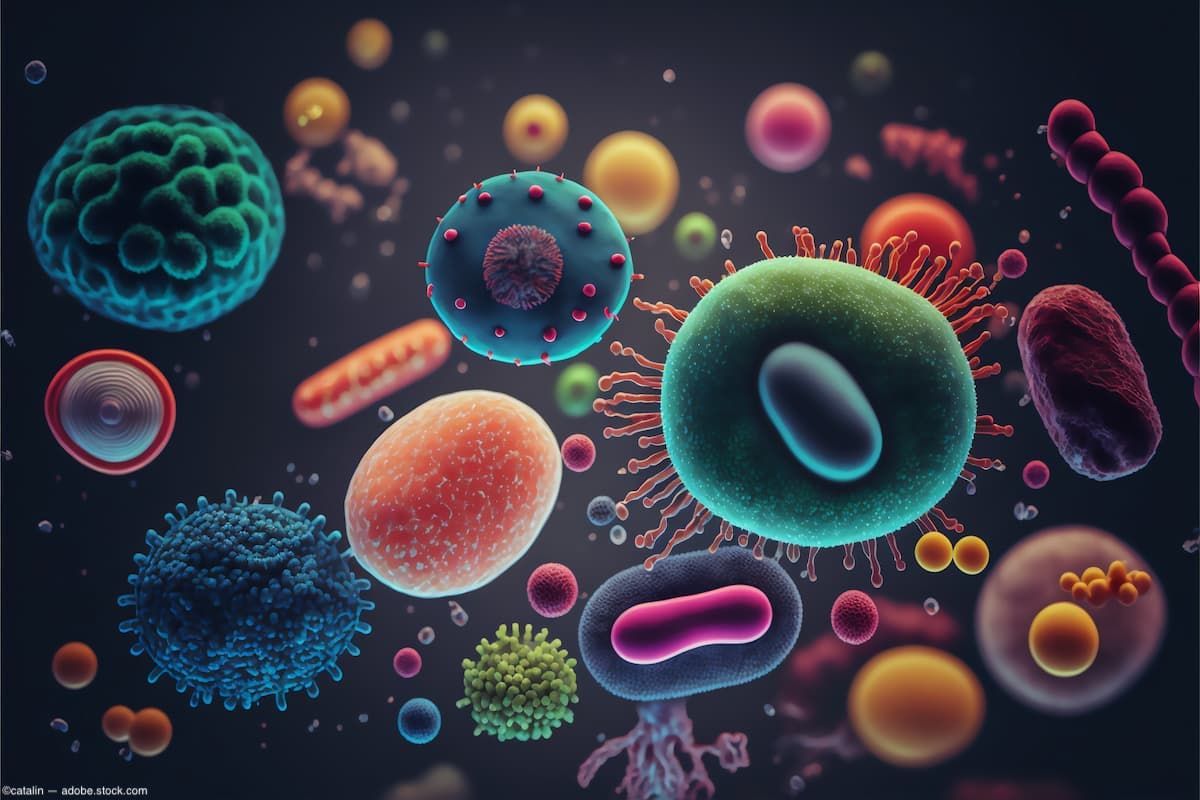Translocated gut bacteria possible cause of some inherited eye diseases
The authors suggested genetic mutation may relax the body’s defences and allow harmful bacteria to reach the eye.
(Image credit: AdobeStock/catalin)

An experimental murine study found that “sight loss in certain inherited eye diseases may be caused by gut bacteria and is potentially treatable by antimicrobials.”1
Investigators from Zhongshan Ophthalmic Centre, Sun Yat-sen University, China, worked with the University College London (UCL) Institute of Ophthalmology and Moorfields Eye Hospital NHS Foundation Trust in the conduct of this study.
According to a press release, the study reported that in eyes with visual loss caused by a particular genetic mutation that leads to blindness, gut bacteria were found within the damaged areas of the eye. The authors suggested that the genetic mutation may relax the body’s defences and allow harmful bacteria to reach the eye and cause blindness.
The researchers were investigating the impact of the Crumbs homolog 1 (CRB1) gene, which is most often associated with Leber congenital amaurosis (LCA) and retinitis pigmentosa (RP). The gene, which is expressed in the retina, is critically involved in the functioning of the blood-retina barrier, which regulates the flow in and out of the eye.
In their murine study, the investigators found for the first time that the CRB1 gene controls the integrity of the lower gastrointestinal tract. There, the gene “combats pathogens and harmful bacteria by regulating what passes between the contents of the gut and the rest of the body,” according to the press release.1
In the presence of a particular mutation, the gene’s expression is decreased, and the barriers in the retina and gut are compromised, facilitating the movement of the gut bacteria through the body and into the eye, resulting in secondary retinal degeneration and vision loss.
Interestingly, in this mouse model, antibiotics had a beneficial effect and prevented visual loss in the animals despite that the affected cell barriers in the eye were not rebuilt, the investigators reported. In addition, the authors noted that future studies will investigate whether this mechanism and potential treatment works in humans.
Co-lead author Professor Richard Lee from the UCL Institute of Ophthalmology and Moorfields Eye Hospital NHS Foundation Trust commented, “Our findings could have huge implications for transforming treatment for CRB1-associated eye diseases. We hope to continue this research in clinical studies to confirm if this mechanism is indeed the cause of blindness in people, and whether treatments targeting bacteria could prevent blindness.”
He continued, “Because we revealed an entirely novel mechanism linking retinal degeneration to the gut, our findings may have implications for a broader spectrum of eye conditions, which we hope to continue to explore with further studies.”
The key points of the study are as follows:
- CRB1 is critical to epithelial barrier integrity in both the retina and colon.
- Crb1 mutations permit bacterial translocation from the gut to the eye.
- Crb1-associated retinal degeneration is dependent on this bacterial translocation.
- Germ-free conditions and antibiotics rescue Crb1-associated retinal degeneration.
